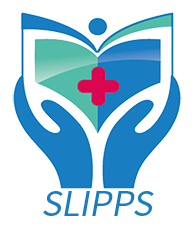24 Jan
2018
24 Jan
2018
Mobile Apps for Patient Safety
Information & Communication Technologies (ICT) and Learning & Knowledge Technology (LKT) have brought a social revolution that has pushed to the health context towards a process of continuous innovation. Terms such as e-Health, m-Health, telenursing, telemedicine, Health-apps or even Dr Google are well known among health professionals around the worth (Vizcaya et al., 2017). Mobile… Continue reading
16 Jan
2018
Learning Event Recording Tool (LERT) to be embedded in curricula
The University of Northumbria at Newcastle in the UK plans to embed the SLIPPS learning event recording tool (LERT) in the curricula of several health care professions. This will allow students to use the tool: whenever they want as often as they want as part of their professional education course for their own personal learning if they wish… Continue reading
08 Jan
2018
‘How do top-down patient safety initiatives permeate through organisational culture within an NHS Foundation Trust’?
Since the 1990s patient safety has been recognised as a major concern within healthcare worldwide, as well as within the UK National Health Service (NHS). There is evidence to suggest that contact with healthcare can cause avoidable harm and unnecessary death. In the literature, these significant safety failings have often been linked to the prevailing… Continue reading
04 Dec
2017
SLIPPs Meeting at Northumbria University 2017.
The transnational management group of SLIPPs met for their third face to face meeting at the University of Northumbria in Newcastle upon Tyne in November. The meeting was very successful and the items discussed included: -Further developing the transnational database: functions and specifications -The Learning event records that we have already collected : some very… Continue reading
02 Dec
2017
Action after adverse events – the second victims need help too
Patient safety incidents are common in healthcare even that patient safety has been a priority for many years in healthcare. It is estimated that every tenth patient faces harm during their care. This means huge amount of human suffering, financial lost, and unfavorable impact on effectiveness of healthcare services. The harm is not restricted just… Continue reading
09 Nov
2017
Patient safety culture in nursing homes
The Norwegian group involved in the development of SLIPPS is also involved in a research project on patient safety culture in Norwegian nursing homes. The patient safety culture in Norwegian hospitals is being investigated with a major national survey each year. The patient safety culture in Norwegian nursing homes is to a much lesser degree,… Continue reading
27 Sep
2017
Helping teachers to identify meaningful learning experiences
Clinical placements allow students to enhance their learning and enable them to develop appropriate professional skills and attitudes. Similarly, students reflections obtained about clinical placements can help teachers and other faculty staff i) to understand the gaps between academia and industry; ii) as tools to explore alternative ways of thinking, and iii) as prompts to… Continue reading
08 Sep
2017
Culture of Safety
Safety culture is defined as shared values, attitudes and patterns of behaviors among individuals or within groups of an organization (Halligan et al., 2011) in which implies organization’s safety programme. No doubt that safety culture is a necessity for any health care organization to optimize its safety and deliver a good and safe care to… Continue reading
19 Jul
2017
Understanding and addressing missed care in clinical placements — Implications for nursing students and nurse educators
Nurses and nursing students need to become more familiar with analysing what do when they experience the discomfort of inner conflict (dissonance) that comes with omitting a care activity while knowing that this is inconsistent with nursing values. If they reflect critically and restore their care in an optimal way they will feel better and… Continue reading
